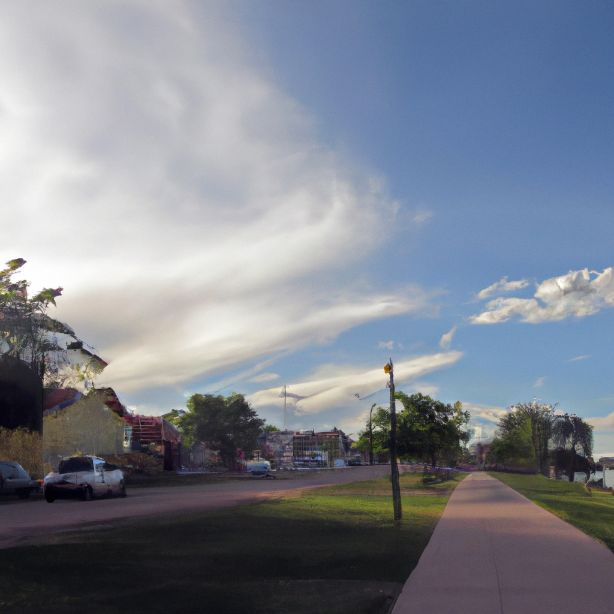Villa Mercedes : Interesting Facts, Historical Monuments & Information | What is Villa Mercedes known for

- By
- Aparna Patel
- |
- 2 Jun, 2023
- |

Villa Mercedes, located in the San Luis province of Argentina, is a small town with a deep historical presence and many interesting facts. From an interesting building structure to being the birthplace of some influential people, Villa Mercedes has had a long and interesting history.
This post will explore Villa Mercedes’ current state, famous buildings, interesting facts, inhabitants and more. Whether you are looking to find out more about Villa Mercedes’ rich history or simply find out what this village is known for, this post has all of the information you need. Let’s take a closer look at Villa Mercedes and explore what makes it so unique!
Interesting Facts About Villa Mercedes City
Villa Mercedes is a city located in the San Luis Province of Argentina. Here are some lesser-known facts about Villa Mercedes:
- Founding and Name Origin: Villa Mercedes was founded on September 20, 1856, by Juan Konig, a German immigrant. The city’s name was inspired by Konig’s wife, Mercedes Sosa. The name “Villa Mercedes” translates to “Village of Mercedes” in English.
- Railway Hub: Villa Mercedes played a significant role in the development of the railway network in Argentina. The city became a major railway hub in the late 19th and early 20th centuries, connecting various regions of the country. The railway system contributed to the city’s growth and economic development.
- La Pedrera Reservoir: Located near Villa Mercedes, La Pedrera Reservoir is a popular destination for outdoor enthusiasts. The reservoir offers opportunities for fishing, boating, and water sports. It also has camping areas and scenic spots where visitors can enjoy picnics and nature walks.
- Historical Architecture: Villa Mercedes features a blend of architectural styles that reflect its history and cultural influences. The city has preserved several historic buildings, including the Municipal Palace and the San Luis Gonzaga Church. These architectural gems showcase the city’s past and architectural heritage.
- Indigenous Legacy: The area around Villa Mercedes has a rich indigenous heritage. The Huarpe people, an indigenous group, inhabited the region for centuries before the arrival of European settlers. The city acknowledges and celebrates this indigenous legacy through cultural events and initiatives.
- Carnival Celebration: Villa Mercedes hosts a vibrant carnival celebration known as the “Carnavales Mercedinos.” This annual event showcases colorful parades, music, dance, and elaborate costumes. The carnival attracts both locals and visitors who come to enjoy the festive atmosphere.
- Industrial Development: Villa Mercedes has experienced significant industrial growth in recent decades. The city is home to diverse industries, including food processing, manufacturing, and textile production. This industrial development has contributed to the city’s economy and employment opportunities.
- Cultural Center: Villa Mercedes boasts a thriving cultural scene with numerous cultural centers, theaters, and art galleries. The Cultural Center “Puertas del Sol” hosts various cultural activities, including art exhibitions, theater performances, and workshops.
- Sports Traditions: Villa Mercedes has a strong sports culture and is known for its passion for football (soccer). The city has several football clubs, and matches often attract enthusiastic crowds. Additionally, other sports such as basketball, tennis, and athletics are popular in the city.
- National Festival of Popular Song: Villa Mercedes hosts the National Festival of Popular Song, a renowned music festival that celebrates Argentine folk music. The festival brings together popular folk artists from across the country, attracting music enthusiasts and promoting traditional Argentine music.
What is Villa Mercedes City is Known For
Villa Mercedes is a city located in the province of San Luis in the Cuyo region of Argentina. It is known for its production of wool and horses, its thermal baths and its neighboring vineyards, as well as for its cultural attractions and natural sites such as Lago De La Plaza.
History & Information About Villa Mercedes City
Villa Mercedes is a city in San Luis Province, located in the province’s southwest portion. The city is a commercial hub and is the third-largest in the province. It is an important agricultural center in the region, producing beef and dairy products, olives, and wheat. The city is home to the University of San Luis, a major research institution.
Villa Mercedes was founded in 1772 by the Spanish Friar, Father Agustin Infante, on a powerful Celtic settlement after its founding, the settlement was quickly raided by raiding Native Americans, and the town was destroyed. In 1807 the town was repopulated by Spaniards and renamed Villa Mercedes, after one of the heroes of the Spanish-American War, Juan Mercedes.
The city began its development into a major population center around the 1930s following an influx of immigrants from the rest of Argentina and other nations during Argentina’s industrial development prior to the Great Depression. The city saw significant growth in industry and population in the 1940s and 1950s, with many agricultural and manufacturing companies being based in the city.
In the 1970s, Villa Mercedes continued to experience population growth, spurred particularly by migration from other parts of Argentina and Uruguay, as well as being a major destination for tourists. Today, the city is a major commercial and agricultural hub, and home to several large companies and industries. Additionally, the University of San Luis is located in the city and is a major research institution in the region.
Villa Mercedes is a unique city in the sense that, even with its size and development, it still maintains an atmosphere of a small village due to its rural population, which makes it an attractive destination for tourists. Villa Mercedes has become a great spot for culinary tourism, with many restaurants serving traditional Argentinian cuisine, as well as more modern global cuisine. Additionally, Villa Mercedes is home to many cultural attractions, including the Plaza de la Libertad and the Municipal Palace. Additionally, the city’s architecture blends clearly defined modernist and classical styles.